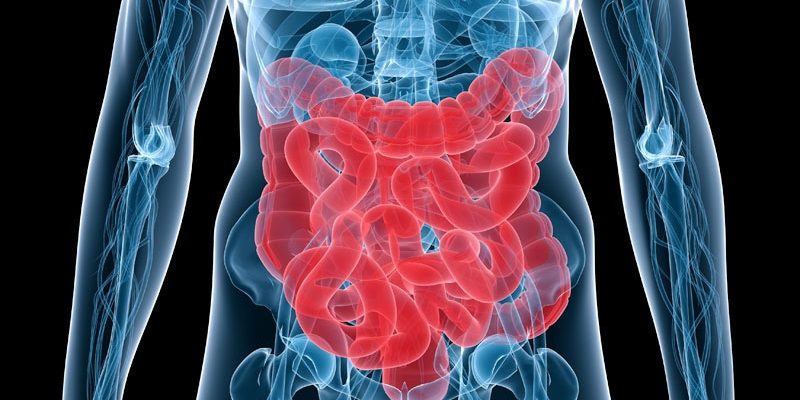Malnutrition is common among patients with inflammatory bowel disease (IBD) and is associated with worse outcomes that can prolong hospitalizations and increase patients’ risk for death.
As many as 85% of inpatients with IBD may be malnourished, with the severity of malnutrition affected by disease activity, extent, and duration, said Kelly Issokson, MS, RD, CNSC, clinical nutrition coordinator in the IBD program in the division of gastroenterology at Cedars-Sinai Medical Center, Los Angeles.
“Malnutrition is a severe complication of IBD, and it should not be overlooked,” she said during an oral presentation at the annual Crohn’s & Colitis Congress®, a partnership of the Crohn’s & Colitis Foundation and the American Gastroenterological Association.
In patients with IBD, malabsorption, enteric losses, inadequate intake, and side effects of medical therapy can all lead to malnutrition, which in turn is an independent risk factor for venous thromboembolic events, nonelective surgery, longer hospital stays, and increased mortality.
In addition, malnutrition in IBD increases risk for infection and sepsis, and for perioperative complications, and can more than double the cost of care, compared with adequately nourished IBD patients, she said.
Issokson cited a definition of malnutrition from the American Society of Parenteral and Enteral Nutrition as “an acute or chronic state of overnutrition or undernutrition with or without inflammatory activity that has led to a change in body composition and diminished function.”
Lab findings of low albumin, low prealbumin, or isolated metrics such as weight loss or change in body mass index do not constitute malnutrition and should not be used to diagnosis it, Issokson cautioned.
Patients at low risk for malnutrition have no unintentional weight loss, are eating well, have minimal or no dietary restrictions, and no wasting. In contrast, high-risk patients have unintentional weight loss, decreased appetite and/or food intake, restrict multiple foods, or show signs of wasting.
Screening
“Nutrition screening is the first step in diagnosing a patient with malnutrition. This is a process of identifying individuals who may be at nutrition risk and benefit from assessment from a registered dietitian,” Issokson said.
The Malnutrition Screening Tool is quick, easy to administer, and requires minimal training. It can be used to screen adults for malnutrition regardless of age, medical history, or setting, she said.
The two-item instrument asks, “Have you recently lost weight without trying?” with a “no” scored as 0 and a “yes” scored as 2. The second question is, “Have you been eating poorly because of decreased appetite, with a “no” equal to 0 and a “yes” equal to 1. Patients with a score of 0 or 1 are not at risk, whereas patients with scores of 2 or 3 are deemed to be at risk for malnutrition and require further assessment by a dietitian.
Assessment
Assessment for malnutrition involves a variety of factors, including anthropometric factors such as weight and BMI changes; biochemical markers such as fat-soluble vitamins, water-soluble vitamins, minerals, and urinary sodium; symptoms such as decreased appetite, abdominal pain, cramping or bloating, diarrhea, or urgency or obstructive symptoms; and body composition measures such as handgrip strength, biochemical impedance analysis, skinfold thickness, bone mineral density, and muscle mass.
Other nutritional assessment tools may include 24-hour recall of nutrition intake, diet history, and questions about eating behaviors, food allergies or intolerances, and cultural or religious food preferences.
Assessing food security is also important, especially during the current pandemic, Issokson emphasized.
“Is your patient running out of food? Do they have money to purchase food? Are they able to go to the grocery store to buy food? This is essential to know when you’re developing a nutrition plan,” she said.
A nutrition-focused physical exam should include assessment of skin manifestation, secondary to malnutrition or malabsorption, such as dry skin, delayed wound healing, stomatitis, scurvy, seborrheic dermatitis, bleeding, and periorificial and acral dermatitis or alopecia.
Diagnosis
Currently available malnutrition criteria have not been validated for use in patients with IBD, and further studies are needed to affirm their applicability to this population, Issokson said.
The Academy of Nutrition and Dietetics–American Society for Parenteral and Enteral Nutrition (AND-ASPEN) malnutrition criteria require measures of weight loss, energy intake, subcutaneous fat loss, subcutaneous muscle loss, general or local fluid accumulation, and handgrip strength to determine whether a patient is moderately or severely malnourished.
Issokson said that she finds the European Society for Clinical Nutrition and Metabolism Global Leadership Initiative on Malnutrition (ESPEN GLIM) criteria somewhat easier to use for diagnosis, as they consist of phenotypic and etiologic criteria, with patients who meet at least one of each being considered malnourished.
“When identified, document malnutrition, and of course intervene appropriately by referring to a dietitian providing education and supporting the patient to help them optimize their nutrition and improve their outcomes,” she concluded.
In a discussion following the session, panelist Neha Shah, MPH, RD, CNSC, a dietitian and health education specialist at the University of California, San Francisco, commented on the importance of malnutrition assessment in patients with IBD being considered for surgery.
Patients should be screened for malnutrition, and if they have a positive screen, “should be automatically referred to a registered dietitian specializing in IBD for a nutrition assessment,” she said.
“Certainly, a nutritional assessment, as Kelly has highlighted really well, will encompass an evaluation of various areas of health – patient history, food and nutrition history, changing anthropometrics, alterations in labs – and certainly going into further nutrition history with net food intolerance, intake from each food group, portions, access, support, culture, eating environment, skills in the kitchen, relationship with diet.”
Issokson is a board member of the Crohn’s & Colitis Foundation and a digital advisory board member of Avant Healthcare. Shah had no disclosures.
This article originally appeared on MDedge.com, part of the Medscape Professional Network.
Source: Read Full Article
